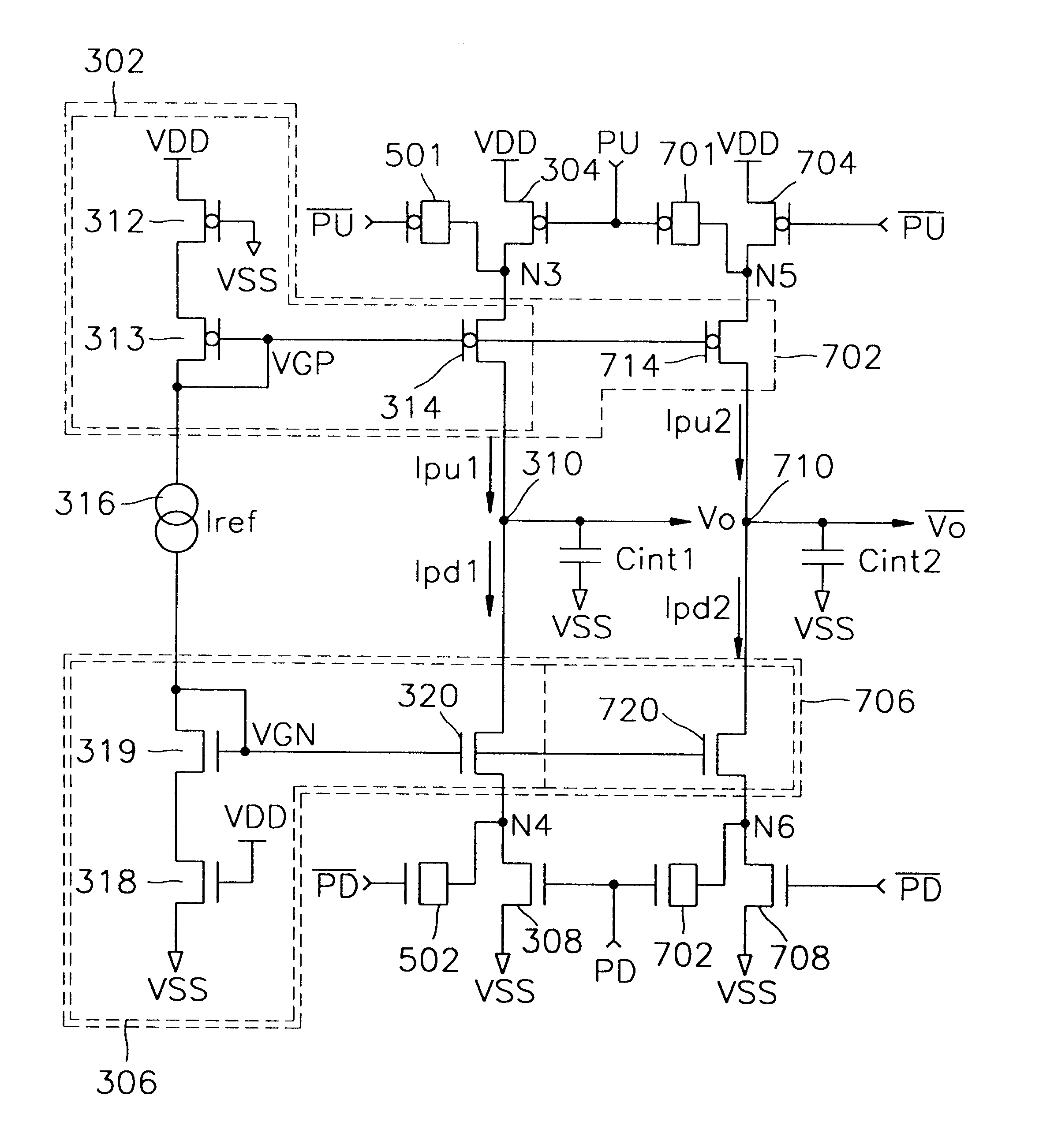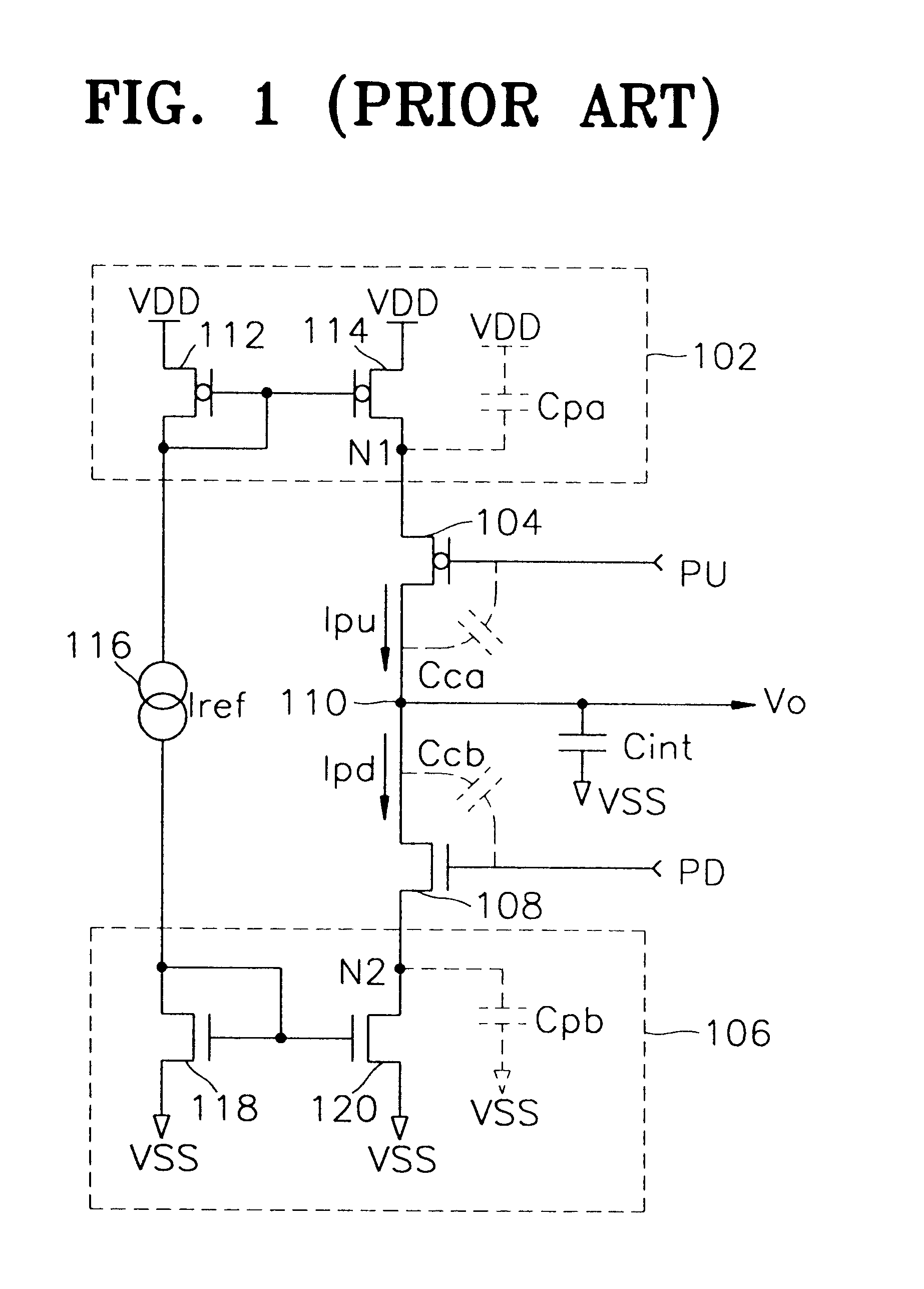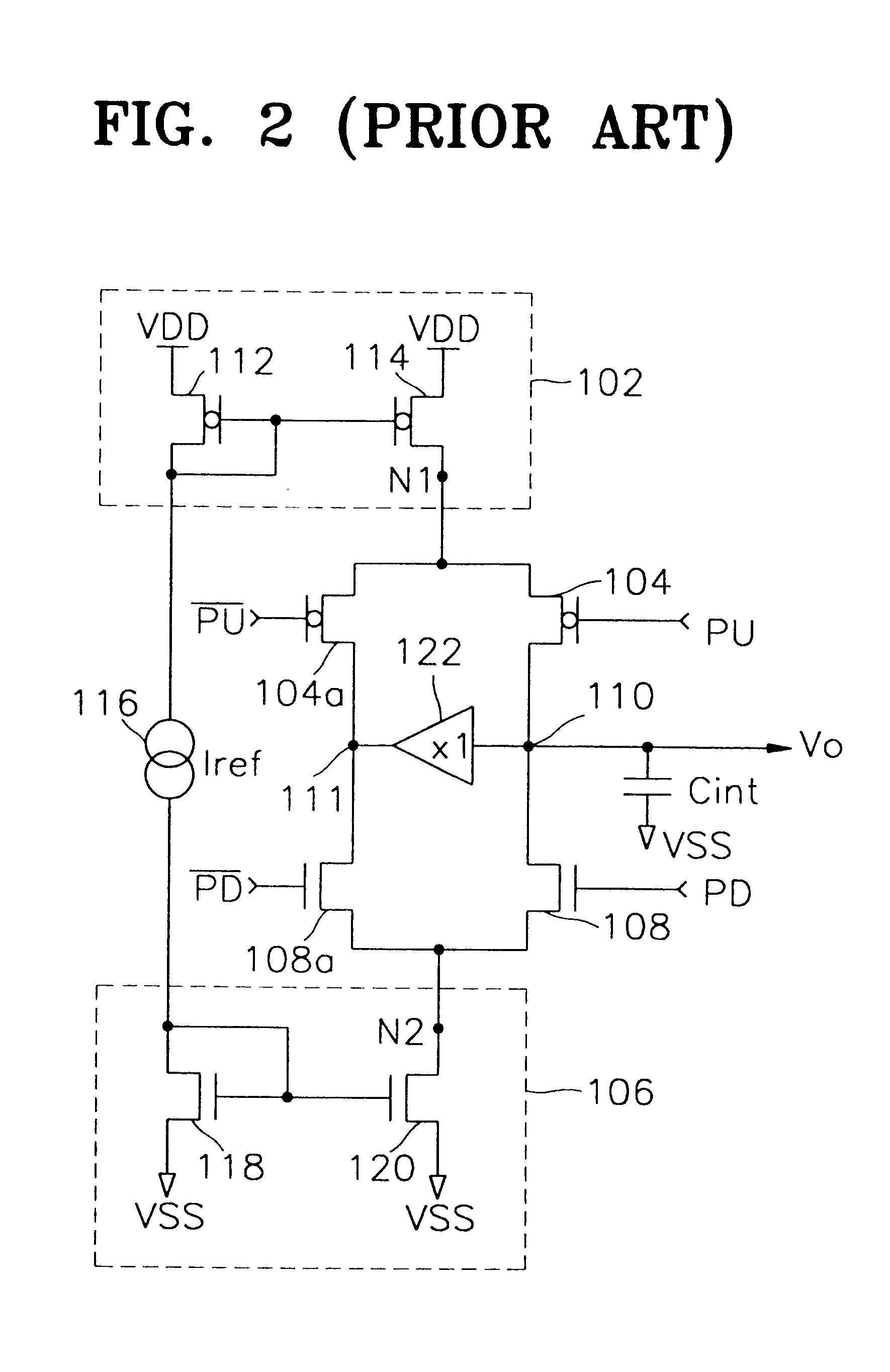Charge pump circuit
a charge pump and circuit technology, applied in the direction of automatic control, process and machine control, instruments, etc., can solve the problems of charge injection, coupling effect, integration errors,
- Summary
- Abstract
- Description
- Claims
- Application Information
AI Technical Summary
Benefits of technology
Problems solved by technology
Method used
Image
Examples
first embodiment
Referring to FIG. 3, a charge pump circuit according to the present invention includes a pull-up current source 302, a first switching device 304, a pull-down current source 306, a second switching device 308, an integration capacitor Cint, and a reference current source 316.
The pull-up current source 302 sources pump-up current Ipu to an output node 310 depending on predetermined reference current Iref that flows from the reference current source 316. The pull-up current source 302 includes a current mirror comprised of PMOS transistors 313 and 314, and a PMOS transistor 312 which is connected between the PMOS transistor 313 and a power voltage node VDD and to whose gate a ground voltage VSS is applied. The first switching device 304 comprised of, in one embodiment, a PMOS transistor, is connected between a power voltage VDD and the pull-up current source 302, and is switched in response to a pump-up control signal PU. The size of the PMOS transistor 312 is preferably the same as t...
second embodiment
The other end of the first dummy capacitor 501 is connected to an inverted signal PU of the pump-up control signal, and the other end of the second dummy capacitor 502 is connected to an inverted signal PD of the pump-down control signal. Thus, the charge pump circuit according to the invention does not suffer from a coupling effect because overlap capacitances Cca and Ccb are offset by the first and second dummy capacitors 501 and 502. As shown in the waveform diagram of FIG. 6, the waveform of an output signal V.sub.O is linear without overshoot.
FIG. 7 is a circuit diagram of a charge pump circuit according to a third embodiment of the invention. Referring to FIG. 7, the charge pump circuit according to the third embodiment of the invention includes a first pull-up current source 302, a first switching device 304, a first pull-down current source 306, a second switching device 308, a first integration capacitor Cint1, a reference current source 316, a first dummy capacitor 501, an...
third embodiment
The second integration capacitor Cint2 is connected between the inverted output node 710 and a ground voltage node VSS, and integrates current flowing through the inverted output node 710 to change the current into the inverted voltage signal Vo. The third dummy capacitor 701 is connected between a junction N5 between the third switching device 704 and the second pull-up current source 702, and a pump-up control signal PU. The fourth dummy capacitor 702 is connected between a junction N6 between the fourth switching device 708 and the second pull-down current source 706, and a pump-down control signal PD. Thus, the differential type charge pump circuit according to the invention does not suffer from a coupling effect because overlap capacitances are offset by the first through fourth dummy capacitors 501, 502, 701, and 702.
As has been described in the foregoing, in a charge pump circuit according to the invention, a switching device controlled by a pump-up control signal PU or an in...
PUM
 Login to View More
Login to View More Abstract
Description
Claims
Application Information
 Login to View More
Login to View More - R&D
- Intellectual Property
- Life Sciences
- Materials
- Tech Scout
- Unparalleled Data Quality
- Higher Quality Content
- 60% Fewer Hallucinations
Browse by: Latest US Patents, China's latest patents, Technical Efficacy Thesaurus, Application Domain, Technology Topic, Popular Technical Reports.
© 2025 PatSnap. All rights reserved.Legal|Privacy policy|Modern Slavery Act Transparency Statement|Sitemap|About US| Contact US: help@patsnap.com



